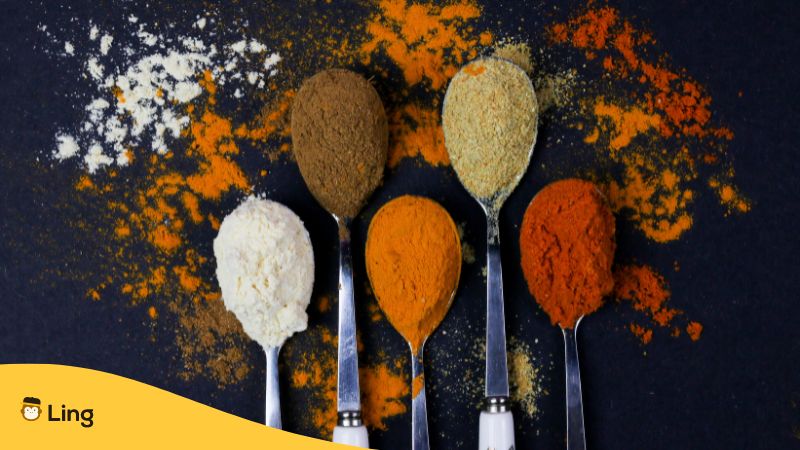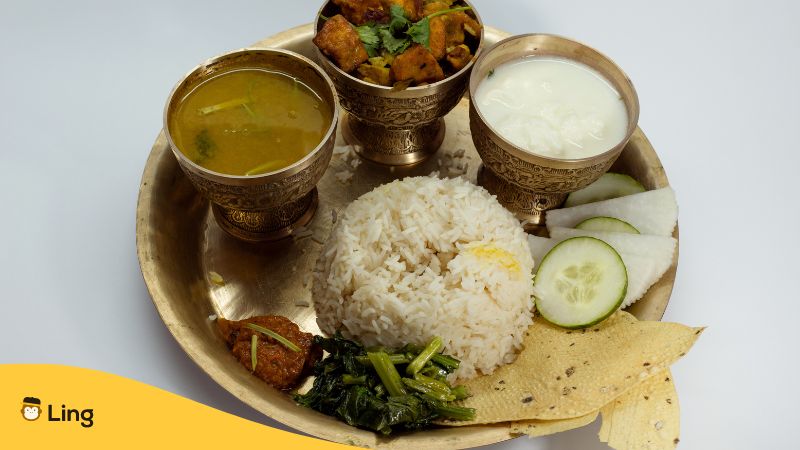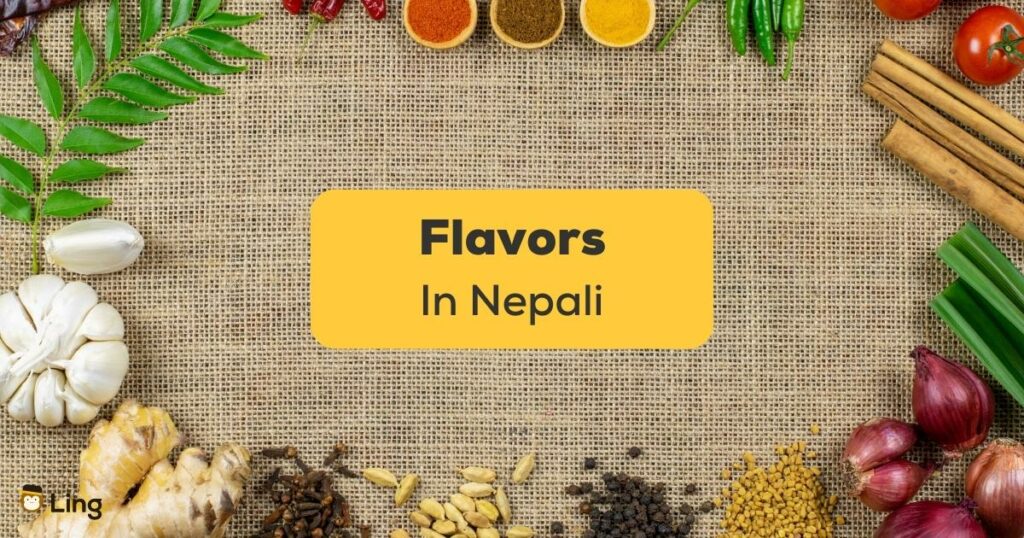Nepal is known for its unique and flavorful cuisine, which is influenced by the country’s geography, climate, and cultural heritage. The mouth-watering flavors in Nepal are worth knowing, especially if you’re planning to visit the country. Let’s take a delicious tour to learn more about flavors in Nepali in today’s post!
Can’t help but love the special Momos? Nepali cuisine is unique due to its blend of Indian and Tibetan influences, resulting in various spicy and savory dishes. Using local herbs and spices, such as cumin and turmeric, adds depth of flavor to dishes. The traditional method of cooking, such as using a clay oven called a tandoor, also contributes to the unique taste of Nepali cuisine. But before you jump off and order Nepali food, let’s go over the flavors you can expect!

The Role Of Food In Nepali
Eating is an important part of native Nepal, and most Nepali people enjoy and enjoy their meals. Food is considered a central aspect of social and familial life and is often used to bring people together. Meals are typically eaten communally, and it is considered rude to start eating before others have been served.
Food or खाना (khana) is also considered a form of hospitality, and it is part of inecessaryNepali customs to invite guests over for meals or to serve food to visitors as a sign of generosity and friendliness. Nepali cuisine is known for its unique and complex flavors, and many Nepali people take pride in their traditional dishes.

Flavors In Nepali
Here are some of the flavors in Nepali and ingredients considered staple food found even on a modern Nepali table:
- Spices: Nepalese cuisine is known for its use of various herbs, including cumin, coriander, turmeric, ginger, garlic, and cinnamon.
- Chilies: Nepalese dishes are often quite spicy, and chili peppers are used in various forms, including dried, fresh, and ground.
- Curd: Curd or yogurt is a staple in Nepalese cuisine and is often used as a base for curries and as a topping for rice dishes.
- Lentils: Lentils are a staple ingredient in Nepalese cuisine and are used in various dishes, including dal (lentil soup), a staple food for many Nepalese people.
- Pickles: Spicy pickles are a popular side dish in Nepal and are often made from various vegetables, such as radishes, carrots, and cucumbers.
- Momo: Momo is a type of steamed dumpling that is filled with meat or vegetables and is very popular in Nepal.
- Chutneys: Chutneys are a popular condiment in Nepalese cuisine and are made from various fruits and vegetables, such as tomatoes, coriander, and mint.
- Rice: Rice is a staple food in Nepal and is often served with curries, dals, and other dishes.
- Meat: Meat, particularly goat, chicken, and water buffalo, is an important part of Nepalese cuisine.
- Vegetables: Fresh vegetables such as potatoes, tomatoes, okra, eggplant, and cauliflower are commonly used in Nepalese dishes.
These are just a few examples of the flavors and ingredients commonly found in Nepalese cuisine. The food can vary depending on the region and ethnic group, and also the availability of ingredients.
Ingredients That Make Flavors In Nepali
Here are the names of some common flavors and fresh local ingredients in the Nepali language, including the Nepali English words:
- Cumin – Jeera
- Coriander – Dhania
- Turmeric – Haldi
- Ginger – Adrak
- Garlic – Lahsun
- Cinnamon – Dalchini
- Chili – Mirchi
- Curd – Dahi
- Lentils – Dal
- Pickles – Achar
- Momo – Momo
- Chutneys – Chatni
- Rice – Bhaat
- Meat – Maas
- Potatoes – Aalu
- Tomatoes – Tamatar
- Okra – Bhindi
- Eggplant – Baingan
- Cauliflower – Phool gobi
Famous Nepali Foods
- Sikarnai: Saffron pistachio yogurt dish
- Katar Curry: Green jackfruit curry
- Patre-roti: Flaky roti bread
- Khasi Ko Masoo: Goat curry
- Rayo Ka Saag: Spiced mustard greens
- Kukhuraa ko momo: Steamed chicken momos
- Alu ko achaar: Potato pickle
- Maas ko khichari: Fish lentil rice
- Rukh katahar ko tarkaari: Ripe or raw jackfruit curry
- Kukhura ko chowelaa: Chicken rice
Importance Of Flavors In Nepali Culture
Flavors play an important role in Nepali culture, both in terms of the traditional Nepali fare and in terms of the country’s social and religious customs.
Firstly, Nepali cuisine reflects the country’s diverse geography and cultural heritage. Spices and herbs such as cumin, coriander, turmeric, ginger, garlic, and cinnamon are used to create a wide range of flavors and aromas in dishes. Nepali cuisine is also known for being quite spicy, with the use of chili peppers in many dishes.
In addition to the food culture, flavors play a significant role in Nepali culture regarding religious and social customs. For example, in Hindu tradition, certain foods and flavors are considered auspicious and are often used in religious ceremonies. Similarly, different foods and flavors are traditionally associated with different seasons and festivals.
Furthermore, flavors are also an important part of Nepali hospitality, and Nepalese people often use food and flavors to express their hospitality and generosity to guests.

Learn Nepali With Ling
Want to follow a Nepali recipe? Cook without any worries by learning the basics of the language through Ling. The Ling app is a unique language-learning app with options, topics, and themes that match your interest! It also comes with interactive features like quizzes, a chatbot, and lessons to keep you entertained in learning!
If you are looking to learn the Nepali language or 60+ others, choose Ling as your companion to tag along and enrich your journey into knowing the flavors and culture of the Nepali people. Download it now from the Play Store and App Store to get started!



































































